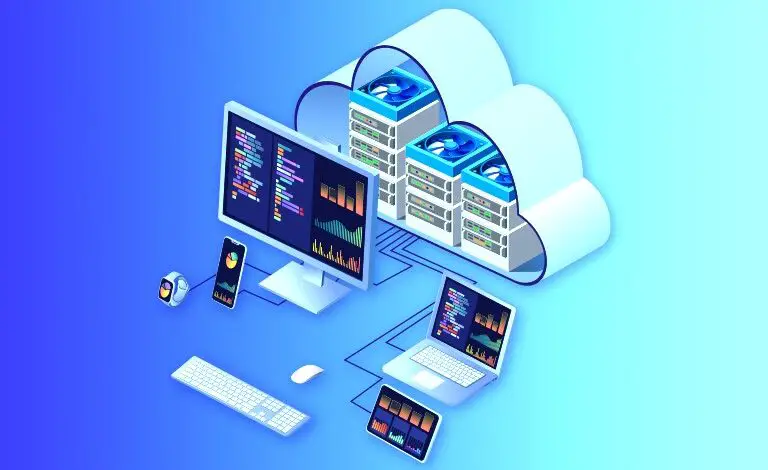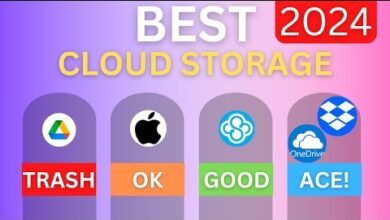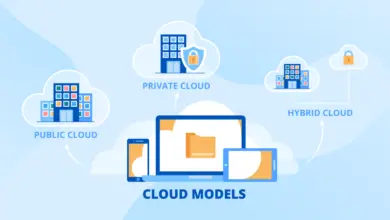The Evolving Landscape of Cloud Storage in 2023: Trends and Innovations
The Future of Data Management: Evolving Landscape of Cloud Storage

Landscape of Cloud Storage: In the fast-paced world of technology, cloud storage continues to play a pivotal role in how individuals and businesses manage and access their data. As we step into 2023, the landscape of cloud storage is evolving rapidly, with new trends and innovations reshaping the way we store, secure, and utilize our digital assets. In this article, we will explore some of the most prominent ideas and developments in cloud storage in 2023.

Edge Computing Integration:
The integration of edge computing with cloud storage is gaining prominence. Edge devices, such as IoT sensors and smart appliances, generate vast amounts of data, and cloud storage providers are working on solutions that allow the processing and storage of this data closer to the source. This reduces latency and enhances real-time data analytics capabilities.
Quantum-Secure Encryption:
With the advent of quantum computing, traditional encryption methods may become vulnerable. In 2023, cloud storage providers are focusing on implementing quantum-resistant encryption to safeguard sensitive data. This ensures that even with the immense processing power of quantum computers, data remains secure.
Hybrid and Multi-Cloud Solutions:
Businesses are increasingly adopting hybrid and multi-cloud strategies to balance cost, performance, and redundancy. In 2023, cloud storage providers are offering seamless integration between different cloud platforms, allowing organizations to efficiently manage their data across various providers while minimizing downtime and data transfer costs.
AI-Driven Data Management:
Artificial intelligence is revolutionizing data management within cloud storage. AI-powered solutions are helping users categorize, tag, and search for data more efficiently. Predictive analytics and machine learning algorithms are also being used to optimize data storage, reducing costs and improving performance.
Immutable Storage for Data Compliance:
With stricter data compliance regulations, cloud storage providers are introducing immutable storage solutions. This means that once data is stored, it cannot be altered or deleted for a predefined period, ensuring compliance with regulations like GDPR and HIPAA.
Cloud-Native Development and Serverless Computing:
Cloud-native development and serverless computing are becoming the norm for application deployment. This trend is impacting cloud storage as well, with providers offering serverless storage solutions that automatically scale with application demand, reducing operational complexity and costs.
Environmental Sustainability:
Environmental concerns are pushing cloud storage providers to adopt more sustainable practices. Some providers are investing in renewable energy sources for their data centers, while others are implementing data deduplication and compression techniques to reduce energy consumption and carbon footprints.
Blockchain-Based Data Authentication:
Blockchain technology is being leveraged to provide enhanced data authentication and traceability in cloud storage. By utilizing blockchain, users can verify the authenticity and integrity of their stored data, reducing the risk of data tampering.
Advanced-Data Recovery Solutions:
In the event of data loss or corruption, advanced recovery solutions are emerging. These include point-in-time recovery, automated backup orchestration, and the ability to recover data from multiple geographical regions, ensuring business continuity.

Augmented Reality (AR) and Virtual Reality (VR) Content Storage:
As AR and VR applications continue to grow, cloud storage is adapting to accommodate the storage and streaming of large immersive media files. High-capacity, low-latency storage solutions are in demand to provide a seamless user experience.
Conclusion:
In 2023, cloud storage is not just about storing data; it’s about providing innovative solutions that cater to the ever-evolving needs of individuals and businesses. The integration of edge computing, quantum-resistant encryption, hybrid and multi-cloud strategies, AI-driven data management, and other trends are shaping a dynamic landscape for cloud storage. As technology continues to advance, we can expect cloud storage to remain at the forefront of digital innovation, enabling us to harness the power of data in new and exciting ways.
Faqs:
What is cloud storage, and how does it work in 2023?
Cloud storage is a service that allows you to store, manage, and access data over the Internet. In 2023, it continues to work by storing data on remote servers maintained by cloud providers, ensuring accessibility from anywhere with an internet connection.
What are the advantages of using cloud storage in 2023?
In 2023, cloud storage offers advantages such as scalability, cost-effectiveness, data redundancy, ease of access, and the ability to collaborate remotely. It also allows for automatic backups and disaster recovery.
Are there any new trends in cloud storage for 2023?
Yes, there are several trends in 2023, including the integration of edge computing, quantum-resistant encryption, hybrid and multi-cloud strategies, AI-driven data management, and sustainable practices in data centers.
Is cloud storage secure in 2023?
Security remains a top priority for cloud storage providers in 2023. They employ advanced encryption techniques, access controls, and compliance measures to protect data. Quantum-resistant encryption is also becoming more prevalent to address future threats.
What are the environmental considerations in cloud storage for 2023?
Cloud providers are increasingly adopting sustainable practices in 2023, such as using renewable energy sources and implementing data efficiency measures to reduce their environmental impact.
How can businesses benefit from cloud-native development and
serverless computing in 2023?
Cloud-native development and serverless computing in 2023 provide businesses with agility, scalability, and cost savings. These technologies allow for the automatic scaling of resources and reduced operational overhead.
What is immutable storage, and why is it important in 2023?
Immutable storage is a feature that prevents data from being altered or deleted for a specific period. It is important in 2023 to comply with regulations like GDPR and HIPAA, ensuring data integrity and security.
How is blockchain used for data authentication in cloud storage in 2023?
Blockchain is used to create an immutable and transparent record of data changes and access in cloud storage. It enhances data authentication and traceability, reducing the risk of tampering or unauthorized access.
What role does AI play in cloud storage management in 2023?
In 2023, AI will be used to categorize, tag, and search for data, optimize data storage, and enhance security. It also enables predictive analytics and automation, making data management more efficient.
How will cloud storage accommodate AR and VR content in 2023?
In 2023, cloud storage will provide high-capacity and low-latency solutions for storing and streaming large AR and VR media files, ensuring a seamless user experience for immersive content.




